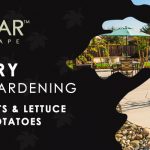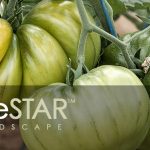March Veggie Gardening Tips Sacramento
March Veggie Gardening Tips Sacramento (Tomatoes)

Zone 9b Sacramento, CA – Starting Tomato Seeds – Best time of year to start Tomato Seeds in Sacramento
Now is the time to start your tomato seeds in Zone 9b Sacramento, CA! Tomatoes are not cold hardy, but they do transplant beautifully. So get some seed starter flats or biodegradable starter cups (you can make your own with newspaper, thus being clever, frugal, and eco-friendly all at the same time), find a south facing window, and get planting! If you need help with a custom landscape design garden plan, give us a call. FiveSTAR Landscape has helped hundreds of Sacramento residents with custom gardening and Landscape Design solutions.
Starting tomato seeds indoors

You can buy starter flats at your local nursery, or you can make your own. You can even cut soda cans in half to use as starters (poke holes in the bottom for drainage), but watch out for your plants’ roots.
If you wait too long to transplant them and the roots get bound to the sides of the can, you might kill your plant trying to get it out of the can and into the ground. There are excellent biodegradable starter cups you can buy at the nursery that are made out of peat moss. When you go to plant them, just break up the peat moss cups so that the roots do not have to work too hard to get out.
Use a soilless seed-starting mix to start your tomato seeds
This is going to be made up of compost, and is very nutrient dense. Place your starter flat or cups on a heating mat or someplace warm. The warmth will help the seeds to germinate. After you have little plant shoots coming up, though, turn off the heating pad and transfer them to a sunny south facing window or under a grow lamp.
Let your baby tomatoes grow for 6 weeks before planting them out into the garden. Fertilize them every 2 weeks with a half strength fertilizer.
When you go to plant your tomato plants outdoors, spend a week or so hardening them off. Take them outdoors for several hours, especially early in the morning and late in the evening, to get them acclimated to the outdoor temperatures. When the soil is 65 degrees and the plants are about six weeks old, it is time to transplant them into your garden! Make sure they have plenty of magnesium (Epsom salts are a good source) when you transplant them, and you will have huge, healthy tomato plants in no time.
Take care of your soil
Now is the time to amend your soil before planting your spring garden. Add compost, manure, well-rotted straw, composted wood chips or bark, well-rotted leaves or any other organic material. Organic material is essential for both sandy and clay soils – it helps sandy soils retain moisture and keeps clay soils from compacting so much. Be careful about using leaves or pine needles – some will change the pH of your soil, so you will need to test beforehand and afterward to make sure that your soil can handle that sort of amendment.



![7 Reasons to Hire a Professional When Selecting Drought-Tolerant Landscape Design [Infographic]](https://www.fivestarlandscape.com/wp-content/uploads/sites/8/bfi_thumb/dummy-transparent-20ve1ivq6qdukeb62j2i373um5b2t0dmv1c3ec01ow5oie3ppw70u.png)

